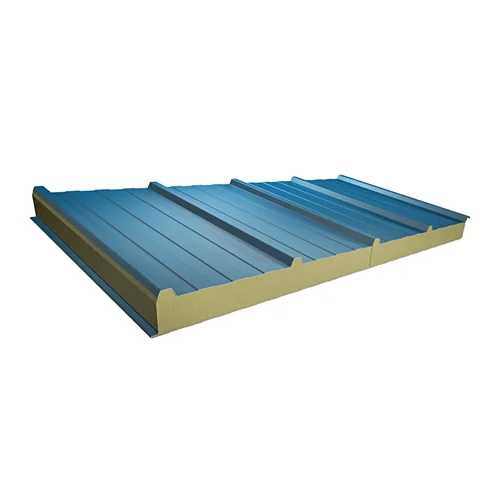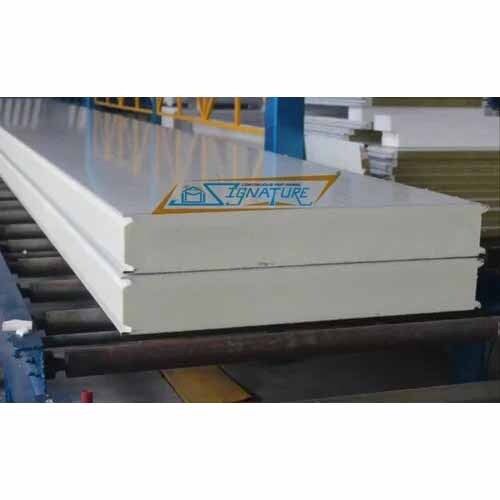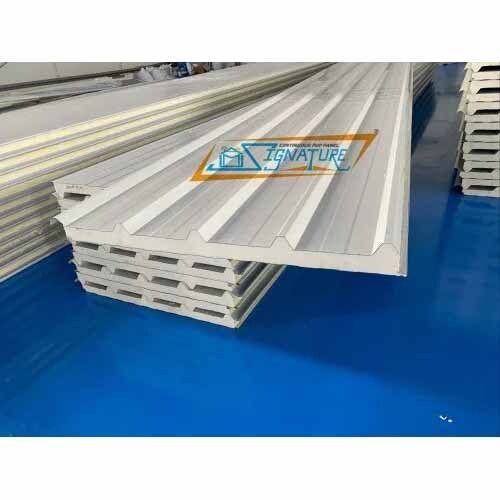Trusted company that deals in quality-made products
- PUF Panels
- Insulated Roof Panels
- Porta Cabins
- Prefab Shelters
- Bunk Houses
- Cold Storage Room
- Labour Huts
- Double Storey Building
- Cold Room Storage Doors
- Operating Theatre Room
- Insulated Panels
- Prefabricated Buildings
- Sandwich Panels
- Walk In Freezer
- Roofing Sheet
- Prefabricated House
- Portable Cabin
- Prefabricated Structure
- Puf Sandwich Panel
Roof Insulated Panel
1120 INR/Square Meter
Product Details:
- Material Steel
- Type Roof Insulated Panel
- Thickness 1.0mm-2.0mm Millimeter (mm)
- Length 7m-9m Meter (m)
- Click to View more
X
Roof Insulated Panel Price And Quantity
- 1120 INR/Square Meter
- 500 Square Meter
Roof Insulated Panel Product Specifications
- Roof Insulated Panel
- 1.0mm-2.0mm Millimeter (mm)
- 7m-9m Meter (m)
- Steel
Roof Insulated Panel Trade Information
- 10 Days
- All India
Product Description
We are focused on being in the business of producing and supplying Roof Insulated Panel relying on excellent performance and efficiency. Our panel is treated by top quality raw materials which have been incorporated into the panel manufacturing process to make them durable, energy efficient, and easy to fix. It is designed to serve a unique function, specifically in insulating a home to maintain respective temperature controls and electricity consumption for the benefit of our clients. This makes us proud because when constructing buildings, different architectural and structural models provide for the use of different panels to suit the construction. Our dedication is a high level of priority right from the time of designing the Roof Insulated Panel up to its production time to deliver premium-quality products. One of the key benefits that customers can thus rely on whenever they are placing an order with us is the quality of the products offered as well as their durability. Buyers can get top-grade Roof Insulated Panel in customized sizes with an assurance of fast and safe delivery.
FAQs of Roof Insulated Panel
1. What are Roof Insulated Panels?
Roof Insulated Panels are composite panels comprising an insulating layer sandwiched between two metal sheets. They provide thermal insulation and structural support, ideal for roofing applications.2. What are the benefits of Roof Insulated Panels?
These panels offer superior thermal efficiency, reducing heating and cooling costs. They are lightweight yet strong, quick to install, and provide excellent weather resistance, making them ideal for energy-efficient buildings.3. Where can Roof Insulated Panels be used?
They are suitable for various buildings, including industrial warehouses, commercial spaces, cold storage facilities, and residential homes. They are versatile and adaptable to different architectural styles and construction needs.4. How do Roof Insulated Panels contribute to sustainability?
Roof Insulated Panels help minimize energy consumption by maintaining stable indoor temperatures, reducing reliance on heating and cooling systems. They are often made from recyclable materials, promoting eco-friendly building practices.Tell us about your requirement

Price:
Quantity
Select Unit
- 50
- 100
- 200
- 250
- 500
- 1000+
Additional detail
Mobile number
Email
Other Products in 'Insulated Panels' category
We mainly deal in Gujarat, Maharashtra, Rajasthan and Madhya Pradesh.







 Send Inquiry
Send Inquiry Send SMS
Send SMS Call Me Free
Call Me Free
